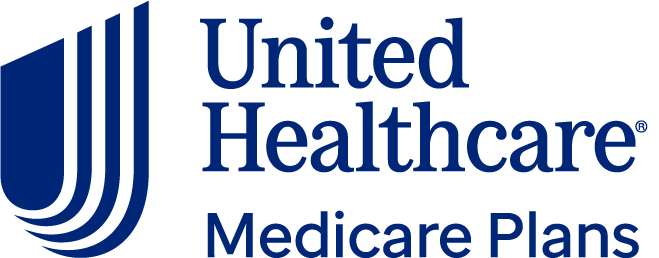What Will You Spend on Health Care Costs in Retirement?
Health costs might be more predictable than you expect, depending on several factors including income and location.

Many, or all, of the products featured on this page are from our advertising partners who compensate us when you take certain actions on our website or click to take an action on their website. However, this does not influence our evaluations. Our opinions are our own. Here is a list of our partners and here's how we make money.
Health care costs make up 9% to 14% of the average older household’s spending. But what you will spend on health care costs in retirement could be less — or potentially a lot more.
A 65-year-old woman typically could expect to pay $3,300 to $7,700 annually for premiums and out-of-pocket medical, dental and vision costs in 2018, according to a study by Vanguard Research and Mercer Health and Benefits. But her costs could top $21,800 in some scenarios, the researchers found.
Retirement health cost estimator:
Trying to estimate what you’ll spend on future medical care may feel like a guessing game. But the researchers discovered that health care costs often fall into fairly predictable patterns based on these major factors:
Your current health
Some chronic health conditions have a larger impact on medical spending than others. The following conditions are associated with future higher costs, the researchers found:
High blood pressure.
High cholesterol.
Rheumatoid arthritis or osteoarthritis.
Heart disease.
Diabetes.
Chronic kidney disease.
Depression.
Alzheimer’s disease, senile dementia and related disorders.
Chronic obstructive pulmonary disease.
Cancer (colorectal, breast, prostate, lung).
Asthma.
Osteoporosis.
Most of these conditions tend to manifest by the time people are in their 50s and 60s, which can help give them an idea of their future health risk, says Jean Young, senior research associate with Vanguard Center for Investor Research. A family history of any of these conditions also could increase someone’s health risk, she says.
In creating a model to help financial advisors predict clients’ health care costs in retirement, Vanguard and Mercer assigned people to one of three risk categories: low, medium and high.
Low risk people do not smoke and generally are free of chronic health conditions.
Medium risk people might smoke, or visit the doctor more than a few times a year and have one or two chronic conditions.
High risk people smoke or visit the doctor frequently or have two or more of the chronic conditions.
The researchers estimated health care costs for women, which are about 2% higher than those for men. People with high health risks could expect to pay roughly 50% to 130% more than those with low health risks.
Shopping for Medicare plans? We have you covered.

4.1
CMS Star Rating
from UnitedHealthcare

3.61
CMS Star Rating
Supplemental Medicare policies
Medicare doesn’t cover everything. People face deductibles, co-pays and out-of-pocket expenses. Some common costs — dental care, glasses and hearing aids — aren’t covered at all. The possibility of higher expenses is why most people opt to buy a supplemental plan, also known as Medigap, or the all-in-one coverage known as Medicare Advantage.
People at high health risk who don’t buy a supplemental plan might expect to pay as little as $3,000 in the first year of retirement or as much as $21,800 annually. That’s the range paid by 80% of those in similar situations, with 10% paying less than $3,000 and 10% paying more than $21,800.
If our 65-year-old instead purchased supplemental Plan F, the most popular Medigap plan, her likely minimum would be higher — $4,700 per year — but the maximum she would probably pay is $11,000 for all of her out-of-pocket costs. (Beginning in 2020, Plan F will no longer be open to new enrollees, but other Medigap plans will continue to be offered.)
If you’re not yet 65 and eligible for Medicare when you retire, your premiums will vary according to the insurance policy you buy.
Your income
Premiums for Medicare Part B (which covers doctor visits) and Medicare Part D (prescription drugs) are based on your income. (Medicare Part A, which covers hospital visits, is premium-free.)
Most people pay the standard premium for Medicare Part B, which is $148.50 per month in 2021. This premium is subsidized by the federal government, and some of that subsidy goes away as your income rises. Premiums start to rise for modified adjusted gross income over $88,000 for single people or over $176,000 for married couples filing jointly. Premiums peak at $504.90 per month each for singles with incomes of $500,000 or more and married people with incomes over $750,000.
Premiums for Medicare Part D averaged $33.06 per month in 2021, but that varies according to the plan you buy and where you live. Those with higher incomes pay a monthly “adjustment” that ranges from $12.30 to $77.10 per person.
Where you live
Medicare Part B premiums aren’t affected by where you live, but most other health care expenses fluctuate based on an area’s cost of living, cost of medical services and levels of federal funding, the researchers found. That includes the cost of private insurance, Medicare Advantage premiums and Medigap policy premiums. In 2017, for example, monthly plan F premiums ranged from $124 up to $279. The median was just over $150. Still, geography had less impact on costs than the other factors, the researchers found.
Other potential factors
Some factors that affect health care costs in retirement but that are not reflected in the Mercer-Vanguard model include:
Marital status. Married people live longer and are generally in better health than singles.
Retirement age. People who work past age 65 tend to be in better health and incur fewer medical expenses than those who retire earlier.
Retiree medical insurance. Some people continue to get health insurance through a former employer or union. Others are covered by a spouse’s plan.
Inflation. The expected costs in the Mercer-Vanguard model are for the first year of retirement only.
Health care costs tend to rise with age, and health care inflation rates tend to be higher than overall inflation rates. The Mercer-Vanguard’s 65-year-old female could expect to spend about twice as much in real terms at age 85, the researchers say.
At the same time, other types of spending tend to decline with age. You may travel less, give up a car and so on. Still, it’s difficult to estimate spending too far in the future, says Scott Ward, a certified financial planner in Birmingham, Alabama, and an ambassador for the CFP Board of Standards.
“It's very difficult to say, ‘Well, hey, I'm going to need a knee replacement in 2032, and it's going to cost $40,000,’” Ward says. “It's hard to predict what that cost will be.”
Ward recommends revisiting financial plans every five years or so in retirement to make sure expected spending still matches up with future income.
“Most people can anticipate what they're going to spend their money on or what they like to spend their money on in five-year periods of time,” Ward says.
The missing piece: Long-term care
About half of people 65 and over won’t incur any long-term care expenses, and an additional quarter will pay less than $100,000. Fifteen percent, however, will pay $250,000 or more.
While routine medical costs are relatively predictable, long-term care costs are much less so. While Medicare helps stabilize health care costs for those 65 and over, it does not pay for nursing home or other custodial care.
Given the huge range of potential costs, there’s no one-size-fits-all solution. Wealthier people might decide to “self-fund,” or pay for long-term care out of their savings. Others might consider long-term care insurance, or plan to tap their home equity. Those who exhaust their savings could wind up on Medicaid, the government health program for the indigent that pays for custodial care. Most people will want to avoid that, Ward notes.
“The No. 1 goal is to not run out of money prematurely,” Ward says. “From a personal perspective, you want to be able to live throughout retirement with dignity and with comfort.”





